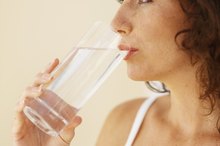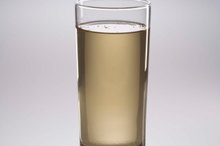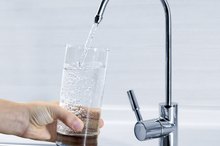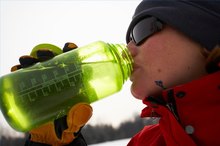The Effects of Drinking Rusty Water
Sparkling, clean, clear and refreshing water is a desired commodity. Water is a vital part of human health. Filtered or purified water is very popular today, especially with recent water issues regarding contamination and pollution. Rust is often found in water due to iron piping because iron rusts over time when it's in contact with water and oxygen. Small amounts of rust won't warm the body because oxidized iron is a nutrient. However, overly rusty water is unattractive, stains and can be harmful.
Bad Taste
The red or brown color of rust in water is unattractive and makes the water look dirty, but it will not cause immediate harm. If the amount of rust is excessive, it may cause the water to taste bad, in which case it is unlikely anyone will want to drink the water.
Iron Supply
Water Filters to Remove Iron
Learn More
Iron in water supplies the body with an essential nutrient. Iron can be healthy for the body because it helps transport oxygen to the blood. The Department of Natural Resources mainly considers rust in water an "aesthetic contaminant" because it is more likely to harm clothing in the laundry by staining it, than a person drinking it 3.
Bacteria
Bacteria can begin to live or collect in rusty water. When this occurs, water must be treated because coliform bacteria can be present. Iron pipes in older homes, age on the inside of the pipe rather than the outside. Rust and mineral deposits begin to build, oxidize and can flake off. This can cause corrosion, cracks and breaks in pipes, which then will cause leaks in the home. If the home floods, water damage leads to a risk of mold which then becomes a health risk. If mold in pipes or sinks gets into drinking water, it will make the person sick.
- Bacteria can begin to live or collect in rusty water.
- This can cause corrosion, cracks and breaks in pipes, which then will cause leaks in the home.
Related Articles
References
- Inspectapedia: Drinking Water Testing Advice
- Stainless Online: Water Treatment for Rust
- Illnois Department of Public Health: Iron In Drinking Water
- Ohashi Y, Sakai K, Hase H, Joki N. Dry weight targeting: The art and science of conventional hemodialysis. Semin Dial. 2018;31(6):551-556. doi:10.1111/sdi.12721
- Beverages, water, tap, drinking. FoodData Central. U.S. Department of Agriculture. Published April 1, 2019.
- Dietary reference intakes for water, potassium, sodium, chloride, and sulfate. National Academies Press, 2005.
- Jéquier E, Constant F. Water as an essential nutrient: The physiological basis of hydration. Eur J Clin Nutr. 2010;64(2):115-23. doi:10.1038/ejcn.2009.111
- Popkin BM, D'Anci KE, Rosenberg IH. Water, hydration, and health. Nutr Rev. 2010;68(8):439-4358. doi:10.1111/j.1753-4887.2010.00304.x
- Adan A. Cognitive performance and dehydration. J Am Coll Nutr. 2012;31(2):71-8. doi:10.1080/07315724.2012.10720011
- Dennis EA, Dengo AL, Comber DL, et al. Water consumption increases weight loss during a hypocaloric diet intervention in middle-aged and older adults. Obesity (Silver Spring). 2010;18(2):300-307. doi:10.1038/oby.2009.235
- National Institutes of Health Genetic and Rare Diseases Information Center. Aquagenic urticaria. Updated June 20, 2016.
- Centers for Disease Control and Prevention. Well testing. Updated April 10, 2009.
Writer Bio
Hilary Atkinson started writing professionally in 2010 for BC Business Online. She contributes to several online publications, specializing in sports, travel, arts and culture. Atkinson graduated from the University of British Columbia with a master's degree in journalism. She also works as a realtor in Barrie, Ontario.









